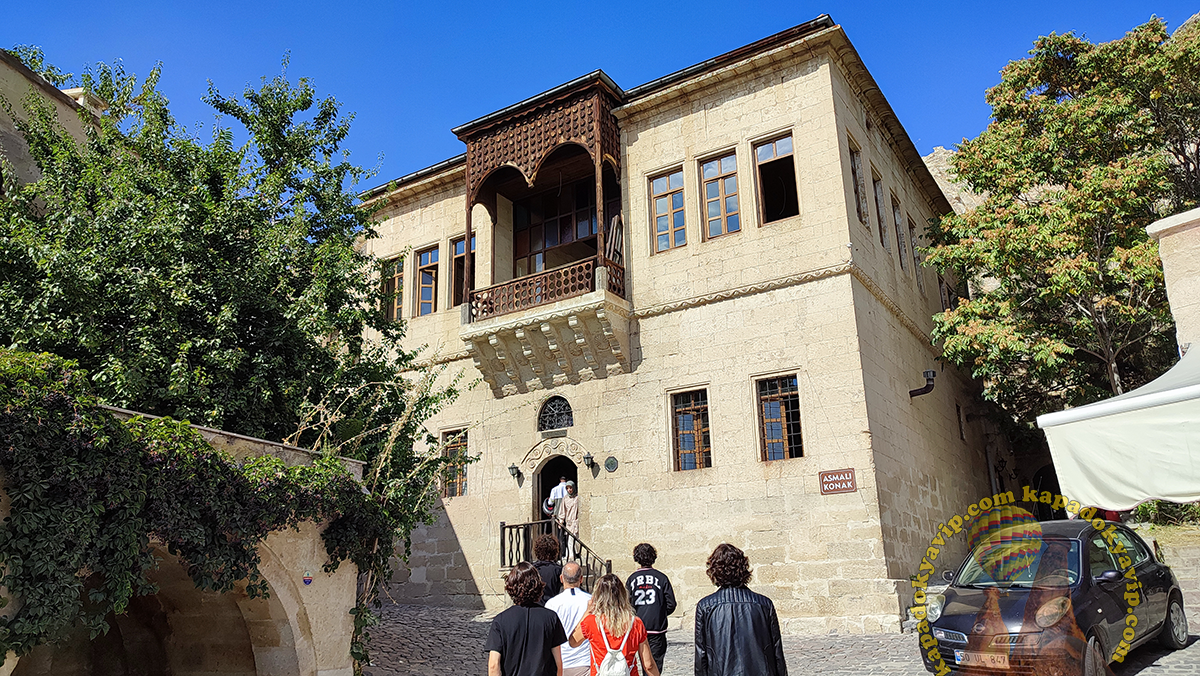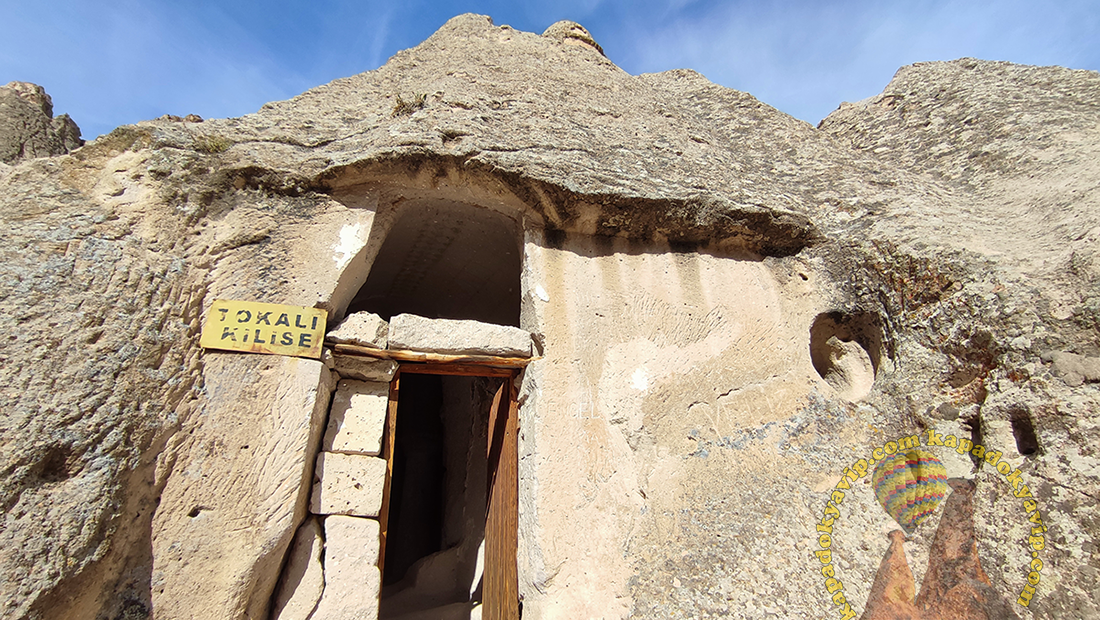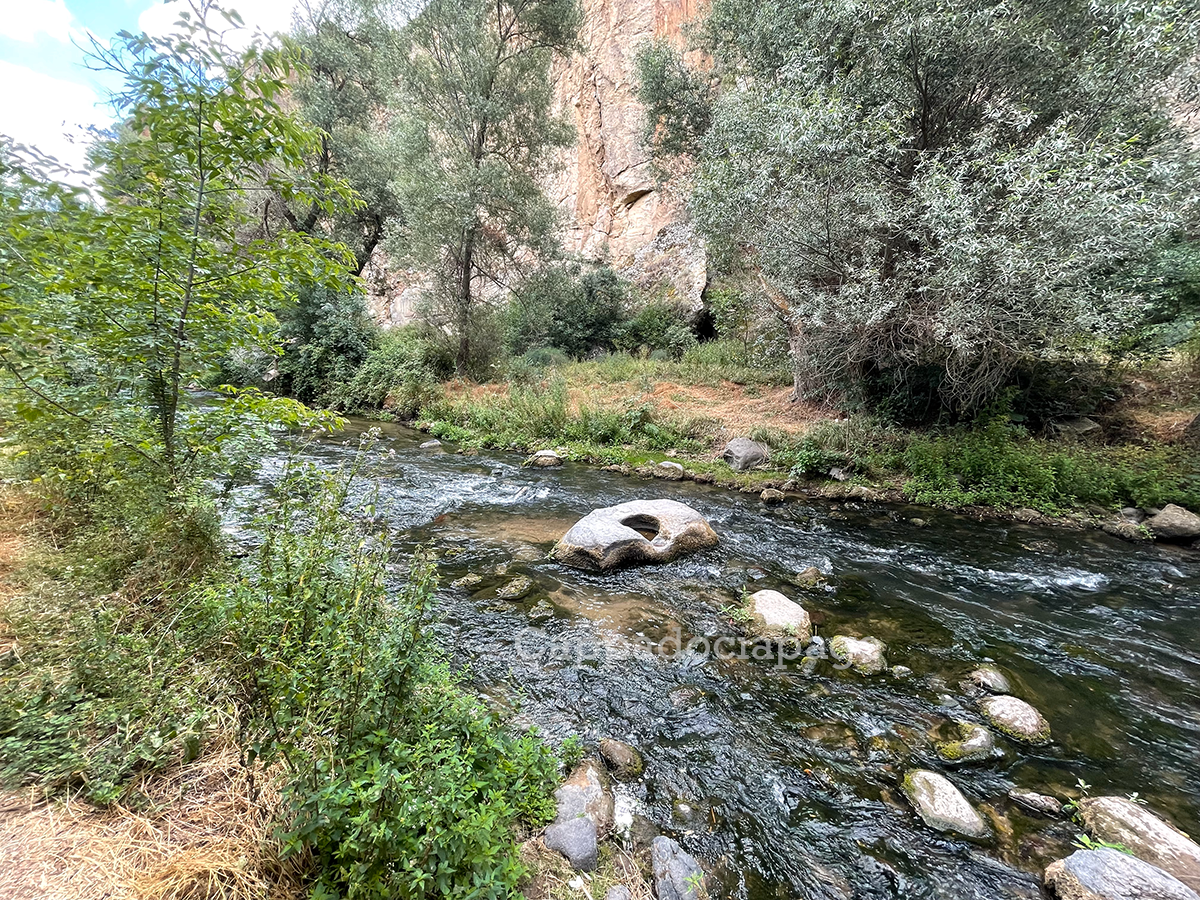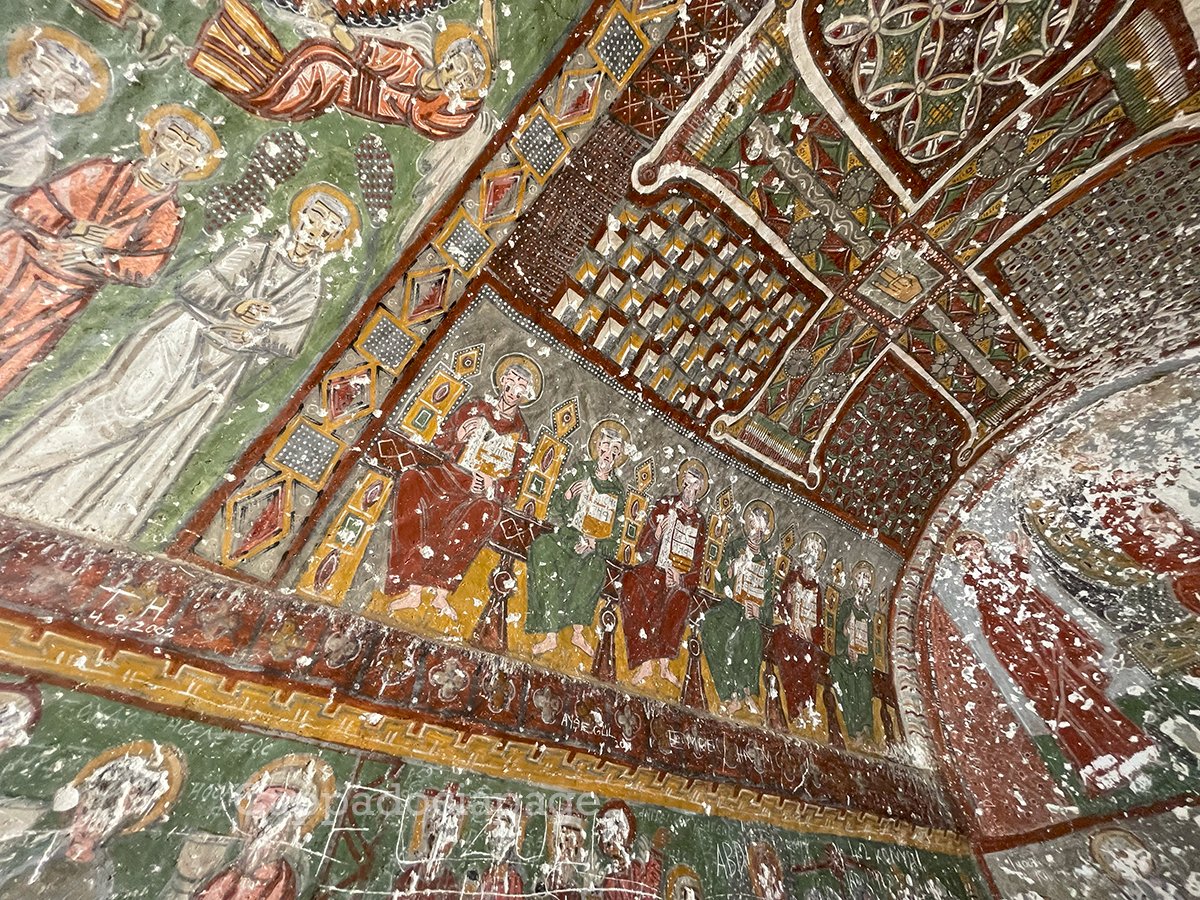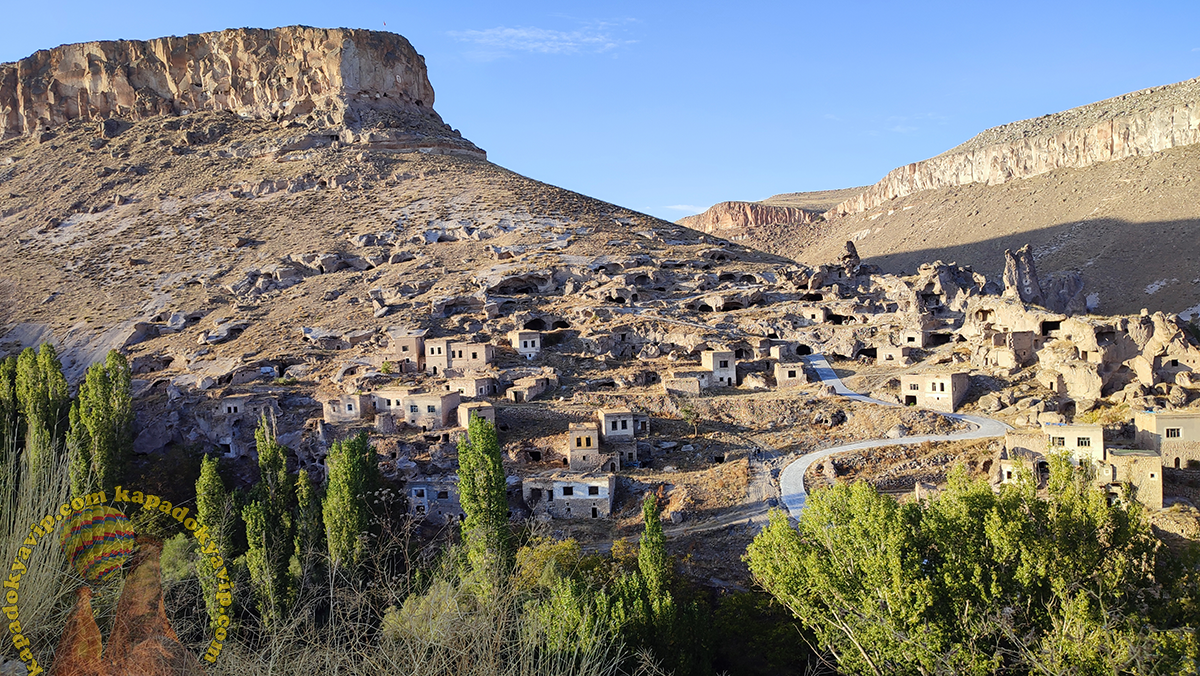
Cappadocia is a unique region in Central Anatolia, whose boundaries were drawn in ancient times and which has hosted numerous civilizations for thousands of years. While today it is primarily associated with Nevşehir and its districts, the region historically also included parts of Kırşehir, Kayseri, Aksaray, and Niğde.
Geological Formation
The geological history of Cappadocia dates back around 60 million years. When the Taurus Mountains began to rise, volcanic activity in the area increased. Massive eruptions from Mount Erciyes, Mount Hasan, and Mount Güllü created layers of lava and ash that eventually covered the region. Over time, rain, wind, and rivers carved these formations into the fairy chimneys we see today one of the rarest natural landscapes in the world.
Early Human Settlement
Archaeological studies suggest that Cappadocia was inhabited as early as 2000 BCE. Excavations in places like Avla Hill near Ürgüp have uncovered obsidian and flint tools dating back to the Neolithic period. Due to its fertile lands and strategic location, Cappadocia became an important settlement and trade center for various civilizations.
Ancient Civilizations
The first known ruling power in Cappadocia were the Assyrians, who used the region as a commercial hub. Later, the Hittites and Phrygians controlled the area, followed by the Persian Empire, during which Cappadocia was referred to as Katpatuka.
In the 4th century BCE, Alexander the Great conquered the region, and soon after, the Kingdom of Cappadocia was established. This kingdom lasted for about 100 years before Cappadocia became part of the Roman Empire.
Roman & Byzantine Period
Under Roman rule, Cappadocia played a crucial role in the spread of Christianity. Early Christians carved homes, churches, and monasteries into the fairy chimneys and soft tuff rocks, many of which still survive today. After the division of the Roman Empire, Cappadocia became part of the Byzantine Empire, continuing to be a center for Christian life and monasticism.
Seljuk & Ottoman Era
In 1072, the region came under Seljuk Turkish rule, and in the 1400s it became part of the Ottoman Empire. During these periods, Cappadocia continued to flourish as a cultural and trade hub, while preserving its unique landscape and traditions.
Cappadocia Today
Today, Cappadocia is world-famous not only for its history but also for its breathtaking landscapes, hot air balloon flights, underground cities, and cave churches. Each valley and fairy chimney carries traces of thousands of years of history, making Cappadocia a true cradle of civilizations. Millions of visitors from around the world come every year to witness its natural wonders and immerse themselves in its rich cultural heritage.
Chronologically, the earliest known civilization to have lived within the borders of Cappadocia were the Assyrians. Their first commercial activities took place in Kayseri Kültepe (ancient Kanesh) and Hattusha Karum, where they established important trading colonies.
This period also marks the first use of writing in Anatolia. The famous cuneiform texts, known as the Cappadocian Tablets, mainly dealt with trade agreements and marriage regulations, offering valuable insight into the daily and economic life of the time.
The Assyrians also laid the foundations for cultural development in the region. Their influence shaped early Hittite art and introduced religious and divine concepts that would spread across Anatolia, placing them in a significant position among the civilizations of Cappadocia.
After the Assyrians, the Hittites established one of the most powerful civilizations in Cappadocia. Their capital, Hattusha, grew into the center of a mighty empire that left a profound mark on Anatolian history. Visitors who want to understand the deep roots of Cappadocia can trace the legacy of the Hittites and other civilizations that once flourished here, each contributing to the unique cultural landscape of the region.
The Hittites left their imprint across almost every corner of Cappadocia. As a long-lasting civilization, they erected monuments near important rivers and passageways, marking their boundaries and commemorating their stories. Archaeologists also believe that the first underground cities in Cappadocia were laid out during the Hittite period for defensive purposes. This era holds a special place in Cappadocian history, shaping much of the foundation of the region we know today.
The Phrygians are another civilization that left its mark on Cappadocia. In short, one of the most important things to know about Cappadocia is that it is truly a cradle of civilizations. Having hosted countless cultures over the centuries, the region is rich in historical traces and cultural textures. Combined with its unique natural landscapes, Cappadocia stands out as an exceptional destination. This remarkable region, visited by travelers from around the world, holds a special place in global heritage.
With the arrival of the Phrygians, many of the Hittite cities in Central Anatolia gradually declined. This period marks the beginning of the Late Hittite era in Central and Southeastern Anatolia, a time of transition and new cultural influences.
The Assyrians originally called the region “Katpatuka.” Its modern name, given by the Persians, means “Land of Beautiful Horses.” The Persians, followers of Zoroastrianism, considered fire sacred, and the region’s volcanoes were seen as their temples. They maintained control over Cappadocia until they were eventually defeated by Alexander the Great.
Although Alexander conquered the Persians, he could not fully overcome the resistance of the local Cappadocian people. As a result, the Kingdom of Cappadocia was established during this period. However, following Alexander’s death, the kingdom faced instability and eventually became a province of the expanding Roman Empire.
Cappadocia’s significance in Christianity emerged during this period. As Christianity began to spread, the Kayseri region became an important stronghold. By the 4th century, the faith was rapidly gaining followers. The area around Göreme, with its secluded valleys and natural shelters, became the first center of monastic life, spreading the teachings of Saint Basil, the bishop of Kayseri. This era is therefore highly significant for Christianity, with Kayseri serving as the heart of religious activity in Cappadocia.
After the decline of the Roman Empire, the influence of the Eastern Roman (Byzantine) Empire remained strong in Cappadocia for centuries. In the early 7th century, conflicts erupted between the Sasanians and the Byzantines. The Sasanians initially took control of the region but were later defeated by Caliph Uthman. Following these events, Cappadocia faced further incursions during the Umayyad Arab invasions.
The Byzantine Emperor was defeated by the army of the Seljuk Bey at the Battle of Malazgirt, paving the way for the establishment of the Anatolian Seljuk State. The Seljuk period began in 1082.
For centuries, the presence of Muslim Turks in a region that had been a center of Christianity did not create conflict. This coexistence is evident in the frescoes depicting Sultan Mesud, which praise his reign and demonstrate the era’s religious tolerance.
Cappadocia has always held great importance in terms of civilizations. Every culture that passed through the region left behind significant traces, contributing to the unique historical and cultural richness we see today.
The Ottoman period is considered one of the most peaceful and prosperous eras in Cappadocia’s history. During this time, Christians were able to live and worship freely, much like during the Seljuk period. People coexisted in harmony, and the construction of mosques, fountains, and complexes flourished. With the establishment of the Republic, the Christian population gradually left the region, leaving behind historical structures that reflect the traces of various civilizations. These sites are now part of Cappadocia’s unique cultural heritage, preserving the atmosphere of multiple faiths and traditions.
Cappadocia’s history is also full of mystery and oral legends. Each historical period carries its own story, from the formation of the fairy chimneys to the lives of the monks. The region’s history is both unique and tangible, marked by the many civilizations that once thrived here.
The soft volcanic tuff made the rock formations easy to carve, enabling the creation of underground cities and other structures. Every step in Cappadocia offers a glimpse into different stories, historical traces, and remarkable architecture. Its special atmosphere and cultural richness attract visitors from all over the world, making it one of the most fascinating destinations on the planet.
History of Cappadocia
https://en.wikipedia.org/wiki/Cappadocia
The enchanting fairy chimneys of Cappadocia, which offer visitors a spectacular visual feast, have a heartwarming story. Long ago, enormous giants roamed the region. These giants were not only massive but also terrifying, and the locals lived in constant fear that the giants might eat them. When angry, the giants would climb to their mountain homes and hurl fireballs down at the people.
Feeling pity for the humans, the Fairy Sultan decided to help. She assigned all the fairies a mission: to extinguish the giants’ flames using the icicles they held in their hands. The fairies bravely battled the fire with ice, and eventually, the giants became afraid of them and stopped coming down from their mountain homes.
With the giants no longer a threat, a beautiful friendship blossomed between humans and fairies. Over time, humans carved small, pointed spaces atop their rock dwellings—and there, the fairies began to live.
What is the Other Name of Cappadocia?
When exploring Cappadocia, you’ll often hear that its name translates to “Land of Beautiful Horses.” Many believe this comes from the Persian word Katpatuka, though historical sources offer differing views.
Before the Common Era, when Greeks ruled parts of Cappadocia, the Persians successfully invaded the region’s Greek cities, establishing the Persian Kingdom. One inscription from this period is thought to refer to Cappadocia as Katpatuka.
However, linguists haven’t found a Persian word matching Katpatuka. Another theory suggests Hittite origins: Katpat may represent the Hittite goddess Khepat, while ukh means “people,” thus interpreting the name as “People of Khepat.” During Hittite rule, naming regions after deities was common, supporting this idea.
Some research proposes that Katpatuka comes from the Luwian language, meaning “lowland.” There are also weaker claims that the name was said to be Persian during the September 12 period in Turkey, possibly to replace Greek names while preserving historical continuity.
Whatever the origin, Hellenistic culture significantly influenced the name. What was once called Katpatuka under the Persian Kingdom eventually became Kappadokia during the Hellenistic period.
Cappadocia unique fairy chimneys and distinctive rock formations were shaped millions of years ago when active volcanoes in the region ceased their activity, and the lava cooled down to form the landscape. These natural structures, later shaped by human hands, transformed into living spaces. The region’s geographical advantages led to numerous conflicts and changes of hands between various states throughout the years.
It is believed that the first inhabitants and explorers of Cappadocia were the Luwians and Hittites. However, due to the ancient history of the region, there are ongoing debates and discussions regarding research on this matter.
When we delve into the history of Cappadocia, we can observe that it hosted numerous civilizations over thousands of years. Research extends back to around 3000 BCE.
In ancient times, Cappadocia was a home to the Assyrians and Hittites. During this period, trade routes were established in the region, fostering cultural interactions. Due to these interactions, it is known that Cappadocia played a significant role in the historical stage.
In a certain era, the Phrygians and Lydians ruled over Cappadocia. Many developments occurred during this time, and it marked the invention of the first coins. After this period, the Hittites briefly regained control of the region, followed by an invasion by the Persians.
Cappadocia was briefly under the Macedonian Kingdom, but later, the Cappadocian Kingdom was established. However, due to powerful neighboring states, the kingdom could not maintain its existence for an extended period.
The Roman Empire stands out as one of the longest-lasting states in the region. After the fall of the Roman Empire, Cappadocia came under the rule of the Byzantines, which was also an extension of the Roman legacy.
Following the Byzantine era, Turkish tribes began to migrate to Anatolia. However, Cappadocia officially came under Turkish rule after the Battle of Malazgirt. While it fell into the hands of the Mongols for a brief period, Cappadocia joined the Ottoman Empire in 1400. Although Cappadocia held significant importance during this period, it was considered a district of Niğde. It gained independent city status after the establishment of the Republic of Turkey.
